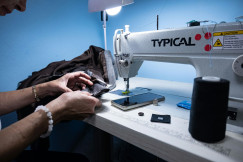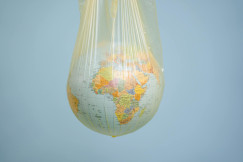Library
23 September 2025
Understanding textile value chains: dynamic probabilistic material flow analysis of textile in the European Union
Library
23 September 2025
Social dimension
Sustainable competitiveness
Regulation and public governance
+8 more
Login / create an account to be able to react

Understanding Textile Value Chains: Dynamic Probabilistic Material Flow Analysis of Textile in the European Union by Loredana Napolano, Jacopo Foschi, Carla Patinha Caldeira, Dries Huygens, and Serenella Sala quantifies textile flows in EU-27 for 2019 and projects toward 2035. It finds that about 11 Mt (million tonnes) of used and waste textiles are generated annually, with roughly 80% - approximately 8.5 Mt ending up in landfill or incineration.
Topics
Albania
Armenia
Austria
Belgium
Bosnia and Herzegovina
Bulgaria
Croatia
Cyprus
Czechia
Denmark
Estonia
EU-27
Finland
France
Georgia
Germany
Greece
Hungary
Iceland
Ireland
Italy
Kosovo
Latvia
Liechtenstein
Lithuania
Luxembourg
Malta
Moldova
Montenegro
Netherlands
North Macedonia
Norway
Poland
Portugal
Romania
Serbia
Slovakia
Slovenia
Spain
Sweden
Switzerland
Türkiye
Ukraine
Other
Academic / Research and VET Institutions
Company with 250 or more employees
Consumer Organisations
EU Institutions
Industry Associations and Chambers of Commerce
Media / Journalist Organisations
National authorities
Networks and Federations / Confederations
NGOs / Non-profits
SMEs (a company with less than 250 employees)
-
Transition Pathway's building blocks
-
-
Social dimension
-
Sustainable competitiveness
-
Regulation and public governance
-
-
Industrial ecosystems
-
-
Textile
-
-
Textiles ecosystem areas
-
-
Fibres, yarns and fabrics
-
Apparel and clothing accessories
-
Household/interior textiles
-
Technical textiles
-
Leather and fur
-
Footwear
-
Waste management, reuse and repair
-
Share
The article 'Understanding Textile Value Chains: Dynamic Probabilistic Material Flow Analysis of Textile in the European Union' by Loredana Napolano, Jacopo Foschi, Carla Patinha Caldeira, Dries Huygens, and Serenella Sala uses a Dynamic Probabilistic Mass Flow Analysis (DPMFA) to map textile production, use, waste, and end-of-life flows in the EU-27 for 2019, and projects baseline flows toward 2035. DPMFA is a modelling approach that tracks how materials move through a system over time, while also incorporating uncertainties such as product lifetimes and disposal patterns.
This paper addresses critical knowledge gaps in textile circularity by revealing how much textile waste is generated, and how much of that is being diverted (or not) from incineration or landfilling.
Key Findings
- The EU-27 produces and consumes large textile volumes: in 2019, around 11 million tonnes of used and waste textiles were generated annually.
- Most of the textile waste (~80%) is not recycled: approximately 8.5 Mt of this waste is either incinerated or landfilled.
- Projections toward 2035 suggest that without significant changes in policy or practices, these end-of-life flows will remain high, implying persistent environmental burdens.
- The probabilistic nature of the model accounts for uncertainties in data (e.g. different types of textiles, product lifetimes, disposal paths), enabling more robust understanding of where interventions may be most effective.
Stakeholders from policymakers to waste management sectors can use these findings to identify priority areas for circular textile interventions. For example, focusing on reducing the share of textiles going to landfill/incineration, improving collection and sorting systems, and designing textiles with longer lifetimes or better recyclability. Investment decisions, regulatory frameworks, and industry practices can be guided by this material flow data to reduce waste and increase reuse/recycling.
This paper makes it clear that while the EU-27 textile sector generates massive volumes of waste, only a small fraction is being diverted from destructive end-of-life methods. To shift toward true circularity, changes are needed in production design, waste management infrastructure, and regulation.
For full details and methodology, refer to the original article on JRC / ScienceDirect.
Comments (0)
See also
-
23
Emotions and motivation: What drives people to repair their clothes?
- Categories
- Sustainable competitiveness Regulation and public governance Textile +9 more
-
20
Unlocking environmental gains through increased textile recycling
- Categories
- R&I, techniques and technological solutions Social dimension Sustainable competitiveness +13 more
-
67
The EIT KICs Position Paper for a Circular and Sustainable Fashion and Textiles Industry in Europe
- Categories
- Infrastructure Investments and funding R&I, techniques and technological solutions +20 more



